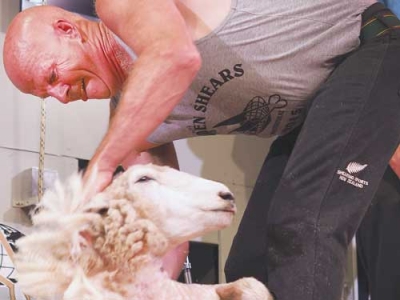
Shearing is more than a simple task, requiring agility, strength, and precision. Shearers train rigorously to hone their skills. Needless to say, the repetitive motion puts an exhausting strain on their shoulders, arms and backs. Moreover, the demanding nature of the task turns out to be hazardous. Here, we mention the common injuries and safety concerns linked to sheep shearing.
- Back Strain: Prolonged bending and twisting while shearing leads to back strain and muscle injuries.
- Repetitive Strain Injuries (RSI): The repetitive motion of shearing results in RSIs such as carpal tunnel syndrome, tendonitis and bursitis.
- Slips and Falls: Shearers can slip on the slick surfaces created by lanolin and water used in the shearing process, leading to falls and injuries.
- Heat Exhaustion: Sheep shearing often takes place in hot and crowded environments, increasing the risk of heat-related illnesses like heat exhaustion or heat stroke.
- Electric Shock: Electric shearing equipment can pose a risk of electric shock if not properly maintained or if there are electrical faults.
Due to engaging in such physically demanding activities, shearers follow a stringent workout plan. Let’s take a look below!
Running Warm-Up
Light Jog: If you have enough space, start with a light jog to elevate your heart rate and warm up your entire body.
High Knees: Incorporate high knees into your run to engage your core and leg muscles.
Butt Kicks: Perform butt kicks to activate your hamstring muscles and improve circulation.
Stretching Routine
Neck and Shoulder Rolls: Gently roll your shoulders and neck to relieve tension and improve mobility.
Arm and Wrist Stretches: Extend your arms and wrists, flexing and extending your fingers to reduce the risk of repetitive strain injuries.
Leg Stretches: Perform leg stretches to improve circulation and flexibility in your lower body.
Dynamic Stretching
Dynamic stretches like leg swings, arm circles, and torso twists can help improve joint mobility and prepare your muscles for the shearing task.
Breathing Exercises
Practice deep breathing exercises to increase oxygen intake and prepare your body for physical activity. You can combine stretching with deep breaths to promote relaxation and reduce stress.
Do you want to learn more about shearing? You can keep an eye on our blog section. So, stay tuned!


You must be logged in to post a comment.
click here to log in